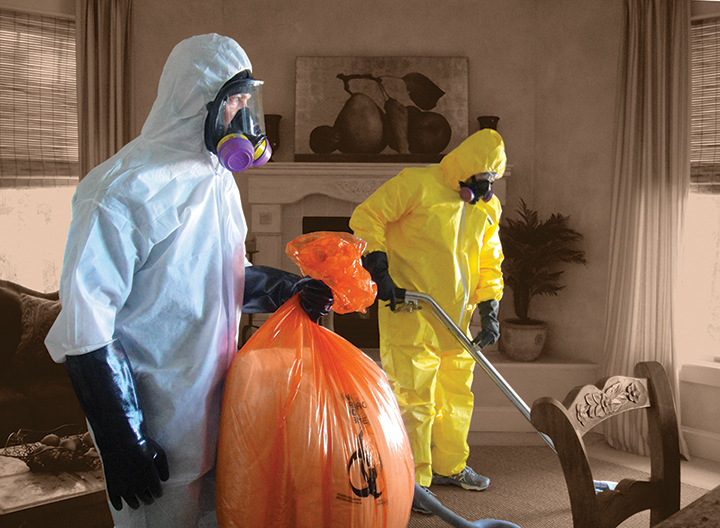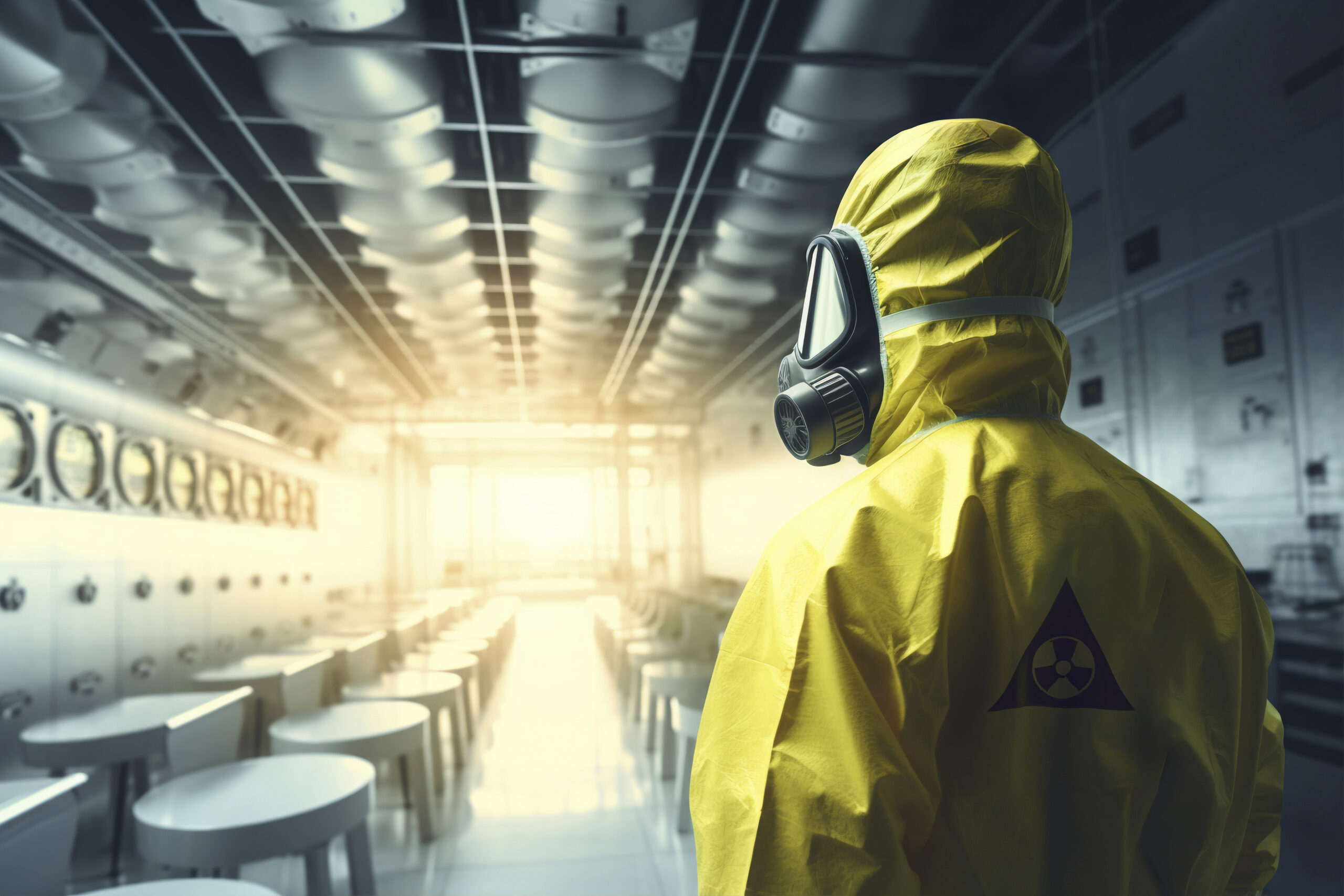Hoarder Cleanup Providers: Fixing Order and Security in your house
Hoarder Cleanup Providers: Fixing Order and Security in your house
Blog Article
Specialist Biohazard Cleaning and Decontamination for Blood, Bodily Fluids, and Hazardous Materials
In the world of biohazard cleansing and decontamination for blood, bodily liquids, and unsafe products, precision and competence are critical. The potential health threats connected with exposure to biohazards emphasize the essential requirement for precise handling and comprehensive cleanup. Specialized training outfits experts with the knowledge and abilities required to address these unsafe circumstances effectively. Nonetheless, it is not simply about cleansing up; the significance of using appropriate decontamination methods can not be overstated. As we navigate the detailed landscape of biohazard clean-up, understanding the nuances of regulations, conformity, and the specialized devices at play becomes necessary in guaranteeing a secure and complete decontamination process.
Wellness Risks of Biohazard Exposure
Exposure to biohazards presents substantial wellness threats that can result in severe repercussions for areas and people alike. Biohazards incorporate a variety of biological substances, including blood, bodily fluids, mold, bacteria, viruses, and other potentially infectious materials. When individuals enter contact with these biohazards, whether through accidents, improper handling, or environmental exposure, they deal with the threat of having serious ailments or conditions.
One of the main health threats connected with biohazard exposure is the transmission of transmittable conditions. Bloodborne virus such as HIV, liver disease B and C, and different germs can be present in biohazardous materials, posing a straight hazard to human health and wellness. Inhaling airborne biohazards like mold and mildew spores or coming right into call with polluted surfaces can also lead to respiratory system concerns, allergies, and other damaging wellness impacts.
Additionally, biohazard direct exposure can have lasting health and wellness implications, with some conditions materializing years after the initial call (Blood Cleanup). Consequently, it is important to prioritize correct biohazard cleaning and decontamination to alleviate these health and wellness threats and make sure the safety of communities and people

Specialized Training for Biohazard Clean-up
When it involves handling biohazard clean-up successfully and safely, specialized training plays an essential duty in ensuring proper purification treatments are adhered to. Biohazard cleanup needs details knowledge and skills to successfully minimize risks related to bloodborne microorganisms, physical liquids, and hazardous materials. Experts educated in biohazard cleaning undertake rigorous instruction on exactly how to securely manage, get rid of, and dispose of biohazardous materials to stop contamination and exposure.
Specialized training for biohazard clean-up covers a variety of crucial subjects, consisting of proper personal protective equipment (PPE) usage, bloodborne pathogen understanding, purification methods, and harmful waste disposal methods. People learnt biohazard cleaning are outfitted with the necessary know-how to assess contamination degrees, recognize prospective dangers, and carry out proper clean-up treatments in compliance with regulatory standards.
Continual training and education and learning are vital in the field of biohazard cleanup to remain upgraded on the most recent decontamination technologies, safety and security methods, and policies. By buying specialized training, biohazard More hints cleaning experts can efficiently react to emergency situation clean-up situations and guard both public health and wellness and the environment.
Relevance of Appropriate Decontamination Strategies
Using proper purification methods is essential in biohazard cleaning to successfully reduce and eliminate harmful materials wellness risks. Reliable decontamination not just ensures the elimination of visible traces of blood, physical liquids, and other biohazards but additionally targets undetectable pathogens that might pose severe health dangers otherwise correctly gotten rid of. By following rigid purification procedures, educated professionals can substantially lower the risk of direct exposure to unsafe microorganisms, infections, and microorganisms that could cause infections or conditions.
Appropriate purification strategies involve making Continued use of customized equipment and disinfectants that are particularly made to neutralize biohazards efficiently. Complete cleansing and disinfection of contaminated areas are necessary to protect against the spread of pathogens and guarantee a risk-free atmosphere for owners. In addition, the correct disposal of biohazardous waste following decontamination procedures is crucial in protecting against contamination of other surfaces or individuals.

Devices and Tools for Safe Cleanup
When dealing with blood, bodily liquids, or try these out dangerous products, biohazard cleaning experts count on specialized gear to lessen exposure dangers and extensively decontaminate the afflicted location. Additionally, biohazard cleansing packages including anti-bacterials, absorbent materials, and biohazard bags are utilized to securely get rid of and have of contaminated products.
Advanced cleansing tools like hospital-grade disinfectants, HEPA-filtered vacuum cleaners, and misting machines are employed to sterilize surface areas and get rid of biohazards effectively. Specialized equipment such as sharps containers and biohazard garbage disposal containers are made use of to securely manage sharp objects and biohazardous waste materials. By using the appropriate equipment and tools, biohazard cleaning experts can make sure a comprehensive clean-up process that focuses on security and decreases wellness threats for both employees and occupants of the affected space.
Laws and Compliance in Biohazard Cleaning
Appropriate adherence to guidelines and conformity requirements is vital in biohazard cleansing to make sure the safety and security of both employees and the setting. Federal government companies such as OSHA (Occupational Security and Health And Wellness Administration) and the EPA (Environmental Security Company) have established specific guidelines for biohazard cleanup treatments to decrease wellness threats and ecological contamination. These policies cover a variety of aspects consisting of the handling, transport, and disposal of biohazardous products, in addition to the necessary training and safety tools needed for workers included in the cleanup procedure.
Biohazard cleansing companies must remain updated with these policies to guarantee that their procedures satisfy the required safety and security requirements. Failure to abide by these guidelines can result in extreme repercussions, including penalties, lawsuit, and jeopardizing the health of people and the environment. By adhering to rigid regulations and conformity steps, biohazard cleansing business can effectively alleviate risks and make certain a secure and comprehensive cleaning process for all events involved.
Verdict
In final thought, biohazard cleansing and decontamination need specialized training, appropriate strategies, and adherence to policies. Direct exposure to blood, physical fluids, and unsafe materials presents substantial health dangers, making it crucial to utilize the appropriate equipment and tools for secure cleanup. By complying with rigorous protocols and guidelines, experts can properly mitigate the risks linked with biohazard direct exposure and ensure the security of both themselves and others.
As we browse the detailed landscape of biohazard cleanup, understanding the nuances of guidelines, conformity, and the specialized equipment at play ends up being essential in guaranteeing a risk-free and detailed decontamination process. (Blood Cleanup)
When it comes to managing biohazard cleaning successfully and securely, specialized training plays a basic duty in ensuring proper decontamination procedures are complied with.Using appropriate purification methods is vital in biohazard clean-up to successfully get rid of harmful materials and reduce health risks. In addition, biohazard cleansing sets consisting of disinfectants, absorbent materials, and biohazard bags are used to securely have and get rid of of contaminated things.
Federal government firms such as OSHA (Occupational Security and Health And Wellness Administration) and the EPA (Environmental Protection Firm) have actually established particular guidelines for biohazard cleaning treatments to lessen health and wellness risks and ecological contamination.
Report this page